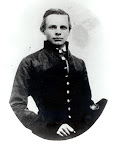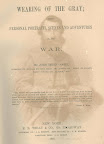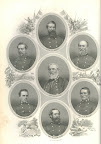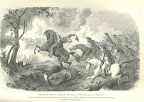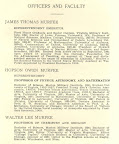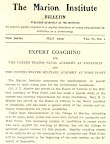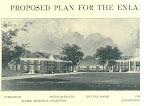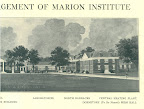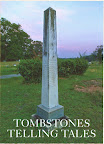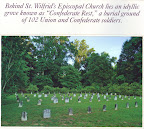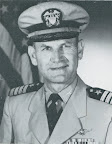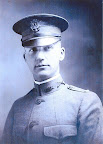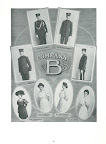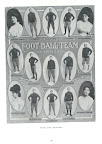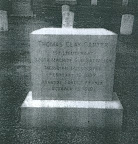From a large family of brothers and sisters - the children of Arthur and Jean Stewart - Arthur Walter Stewart, Jr., was born in Marion and received his A.A. degree from Marion Military Institute in 1935. He continued his education at Auburn University and at the Art Institute of Chicago, where he presented his first one-man show at the age of 23. Stewart had begun painting when he was six years old.

The MMI Corps of Cadets when Arthur Stewart (“A” Company) was a cadet. (Credit: 1934-1935 MMI Catalogue, MMI Archives)
Following a four and a half year stint in the Army during World War II, where he served as a painter in the ordnance department, Arthur Stewart traveled extensively in Mexico and Europe for several years, painting as he went. He finally settled in San Francisco in 1947, although he made annual trips to Alabama to paint portraits. In 1952, Stewart moved to Birmingham, Alabama, permanently.
Arthur Stewart taught at the Birmingham Museum of Art School, served as president of the Alabama Watercolor Society, and was inducted into the Portrait Painters Hall of Fame in 1985. During his career, he won over 30 national awards, and presented over 35 one-man shows from New York to California. Along the way, he painted literally thousands of works – oil portraits, watercolor flowers, and scenic landscapes – which today hang in more than 1,000 public and private collections worldwide.
When Arthur Stewart first moved to Birmingham, he lived in a small house on the property of the grandparents of Joel R. Hillhouse, MMI Board of Advisors member. Joel’s parents first lived on the property after their marriage, and Arthur Stewart taught Joel’s mother art and even painted her portrait. Joel Hillhouse, MMI H Class of 1959, who owns a number of Stewart paintings, has one particular favorite, “The Studio” (below), which depicts that small house.

"The Studio" by Arthur Stewart. (Credit: Collection of Joel R. Hillhouse)
Stewart later purchased the 40-acre “Glocca Morra Farm” (named after a song in Finian’s Rainbow) in Cahaba Heights near Birmingham. There he lived the rest of his life, while continuing to produce works both in the United States and Europe. When his health failed, he was cared for by his sister, Hannah Stewart. Arthur Stewart painted up until his last days, dying on September 6, 2001, at the age of 86.
Arthur Stewart’s works can be found in collections ranging from Britain’s Queen Elizabeth, II, the La Scala Opera House in Milan, Italy, the Pentagon in Washington, D.C., the Lyndon Bains Johnson Library in Texas, and the Birmingham (AL) Museum of Art. Reportedly, his works sell from $400 to $35,000 each.
On September 1, 1993, Arthur Stewart’s portrait of William R. Ireland was unveiled at the William R. Ireland Athletic Center at Marion Military Institute (dedicated April 3, 1993). In the image below – from the 1994 MMI Orange and Black yearbook – the group flanking the painting include from left to right: MG Joseph Fant, MMI president, Arthur Stewart, the artist, Mr. and Mrs. William R. Ireland, and Alva Caine, Chairman of the MMI Board of Trustees.
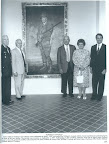
At the unveiling of Arthur Stewart’s painting of William R. Ireland at MMI’s Ireland Center on September 1, 1993. (Credit: 1994 MMI yearbook, MMI Archives)
Credit: I am indebted to Joel Hillhouse and James Murray of Birmingham for providing the bulk of this material. We know Joel, of course. He also provided the color image posted here from his collection of Arthur Stewart paintings. Jim Murray is head of Social Sciences at the Birmingham Public Library.
